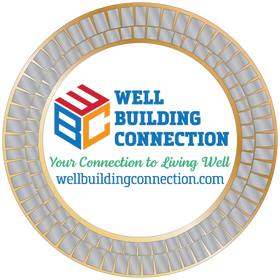AIR: Improve and Monitor Indoor Air Quality
Ensuring a Healthy Indoor Environment
Indoor air quality (IAQ) plays a crucial role in the health and wellbeing of individuals. With most people spending a significant portion of their lives indoors, ensuring the air we breathe within these spaces is clean and free from pollutants is paramount.
Understanding Indoor Air Quality
Indoor air quality refers to the condition of the air inside buildings and structures, particularly as it relates to the health and comfort of occupants. Various factors contribute to poor IAQ, including pollutants such as dust, mold, volatile organic compounds (VOCs), and other chemicals.
Common Indoor Pollutants
· Dust and Particulate Matter: These are tiny particles that can be inhaled, causing respiratory problems and allergies.
· Mold and Mildew: Moisture problems can lead to mold growth, which releases spores into the air and can cause health issues such as asthma and allergic reactions.
· Volatile Organic Compounds (VOCs): Found in household products like paints, cleaners, and building materials, VOCs can cause headaches, dizziness, and long-term health effects.
· Carbon Monoxide (CO): This odorless, colorless gas can be deadly in high concentrations and is produced by appliances like gas stoves, heaters, and fireplaces.
· Radon: A radioactive gas that can seep into homes through cracks in the foundation, radon exposure is a leading cause of lung cancer.
Improving Indoor Air Quality
Improving IAQ involves a combination of reducing pollutant sources, enhancing ventilation, and using air purification technologies. Here are some effective strategies:
Air Purification
Air purifiers can effectively remove pollutants from indoor air. When selecting an air purifier, consider the following:
· Type of Filter: High-Efficiency Particulate Air (HEPA) filters are effective in removing dust, pollen, and other particles. Activated carbon filters can absorb gases and odors.
· Coverage Area: Choose a purifier that matches the size of the room it will be used in.
· Maintenance: Regularly replace filters as recommended by the manufacturer to ensure optimal performance.
Monitoring Indoor Air Quality
Monitoring IAQ is essential for identifying problems and ensuring that improvement measures are effective. Well Building Connection offers various tools and technologies for this purpose:
Air Quality Monitors
Air quality monitors can measure levels of pollutants such as VOCs, particulate matter, CO2, and humidity. These devices provide real-time data and alerts when air quality falls below acceptable levels.
Conclusion
Improving and monitoring indoor air quality is vital for ensuring the health and wellbeing of individuals. By understanding common indoor pollutants, implementing effective improvement strategies, and utilizing monitoring tools, we can create healthier living and working environments. Continuous education and proactive measures will help maintain high IAQ standards and protect occupants from the adverse effects of poor indoor air quality.










